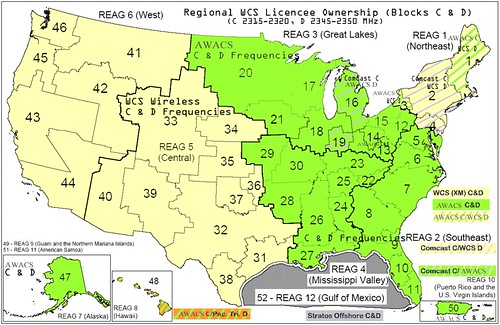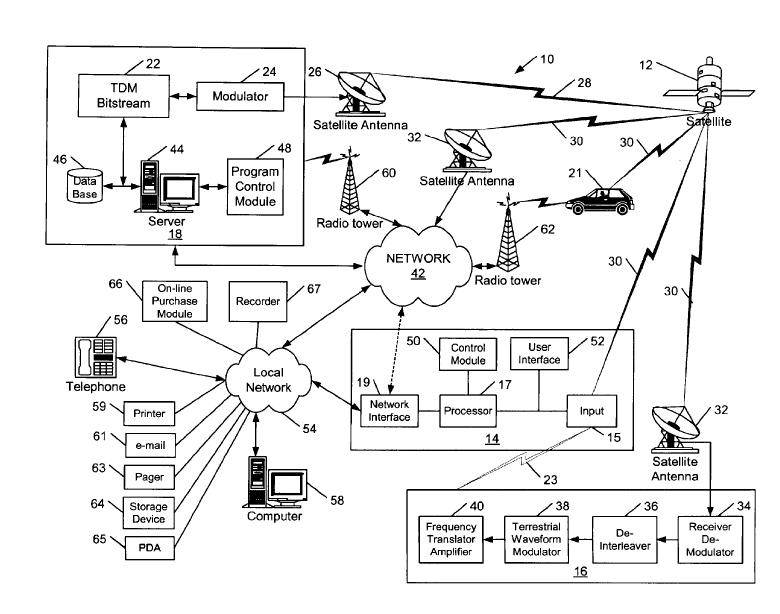AT&T’s Satellite Radio System
What happens to all that extra capacity if and once Sirius and XM merge? Mobile TV, perhaps? Judging from the initial success of vestigal sideband tests, they’d need something different.
I seem to recall AT&T owning Wireless Communications Services (WCS) spectrum that was in two 15MHz blocks at 2.3GHz with satellite radio (XM and Sirius) in and around those blocks. There was concern that once new WCS came around, there would be interference with satellite radio services — especially C and D channels of this WCS spectrum. But if you grab some of the spectrum that become available after a merger, then one could essentially coordinate the frequencies nicely.

So what do we see AT&T file with the patent office last week? Two applications for a satellite radio system with feedback. Nice catch by Satellite Radio TechWorld:
Through various mergers, AT&T has acquired enough spectrum that could possibly make satellite radio practical. Plus, technology has developed that would make spot beams more practical. There are only a few players left. It wouldn’t take but a few players to come together for nationwide service. Most of the WCS license holders are planning to use WiMax, but it is not practical under the current regulations. They are trying to change the rules in order to make it practical and the same time the FCC is trying to determine the final rules for satellite radio repeaters. If rules are not adapted that would make WiMax practical, then satellite radio might be the next best practical use of the spectrum.
And the timing? Ingenious:
It is interesting to note that this application was filed after XM and Sirius announced the merger (September 24, 2007). Applications can be kept away from the public for up to 18 months, if we recall correctly. This was less than four months ago. They wanted this to be public. However, this is not new. It is based on an application filed in September 2003 and recently became patent on September 25, 2007. No doubt it is enough to give XM and Sirius pause for consideration.
Here are the two applications (in PDF):
Digital Radio Feedback Apparatuses, System, and Methods
Digital Radio Feedback Systems

